#geofencing software
Explore tagged Tumblr posts
Text
Geofencing in Retail: How Retailers Can Target Customers with Personalized Offers
Imagine strolling through your favorite shopping district, and just as you pass a store, your phone buzzes with an offer: “Exclusive 20% off on all items, just for today!” You weren't planning to shop, but with that timely nudge, you head right in. That’s the magic of geofencing, and it’s transforming how retailers engage with customers.
Geofencing is more than just a buzzword in retail—it’s a smart, location-based strategy that brings customers closer to brands. But what exactly is it, and how can retailers use this geofencing technology to create personalized offers and boost sales? Let’s dive into this innovative tool and explore its potential.
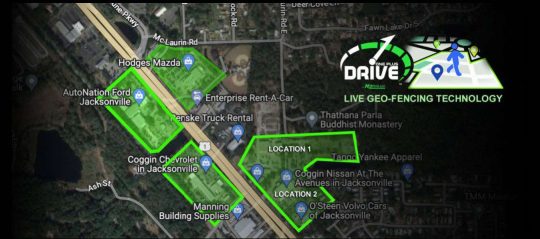
What is Geofencing?
Geofencing is a location-based service that creates virtual boundaries or "fences" around a specific geographic area. When a customer crosses this boundary with their smartphone or tablet, it triggers an action—such as sending a personalized offer or promotion. Think of it as a virtual net that captures your attention right when you’re in proximity to a store, urging you to engage.
Retailers can create a geofence around their store or a competitor’s location. Once a customer enters the geofence, retailers can send them real-time promotions, flash sales, or special events happening at that very moment. It’s all about reaching the right customer at the right place and time.
Why Geofencing Works So Well in Retail
Geofencing taps into the power of immediacy. Consumers today crave convenience, and nothing is more convenient than receiving a personalized offer exactly when they need it. By leveraging geofencing software, retailers can:
Deliver personalized promotions based on a customer’s location and preferences.
Increase foot traffic by enticing nearby customers with real-time offers.
Boost customer loyalty by creating memorable, personalized shopping experiences.
Track customer behavior, such as which locations they frequent and how often they visit.
This technology allows retailers to create highly targeted campaigns, reducing the amount spent on generic ads and instead focusing on leads that are more likely to convert into sales.
How Geofencing Stands Out from Traditional Marketing
Traditional marketing casts a wide net, hoping to reach as many potential customers as possible. However, the problem with this method is its need for more precision. That’s where geofencing swoops in as a game changer. Instead of bombarding everyone with ads, geofencing ensures that only those within a certain geographical area—people who are more likely to visit the store—are targeted.
With geofencing technology, retailers can even create hyper-local campaigns. For instance, a Portland, Oregon store could send out special promotions exclusively to customers in a particular neighborhood or district. This localized approach fosters a stronger connection between the customer and the brand, making promotions feel personal rather than invasive.
Creative Ways Retailers Can Use Geofencing
Flash Sales: Retailers can use geofencing to notify customers about limited-time offers when they step near the store.
Event Invitations: Hosting a VIP event? Invite customers who are within a set radius of your store, offering them exclusive entry if they show up within the next hour.
Competitor Targeting: Geofencing can be used around competitor stores. When potential customers visit a competing retailer, they receive a notification with a tempting offer from your store instead.
Personalized Discounts: Based on a customer's purchase history and preferences, retailers can send customized discounts or rewards when they walk by.
How N2Plus Dealers Elevate Geofencing with GeoConnect
Now, let’s talk about the future of geofencing—geo-framing. While traditional geofencing is a powerhouse in its own right, N2Plus Dealers takes it up a notch with their GEOCONNECT platform. This innovative tool offers something truly cutting-edge: identifying up to 50% of individuals crossing a preset geofence and engaging them in real-time.
How does it work? Unlike traditional geofencing, geo-framing captures data from mobile apps running in the background without any compliance issues. This means you can reach your target audience with curated offers even when they aren’t actively using their phones. For retailers, this is huge! The data collected is sent straight to a business’s marketing system, allowing for immediate, personalized engagement.
N2Plus’s GEOCONNECT is particularly powerful for car dealerships, but its retail application can be just as impactful. Imagine engaging with a customer actively browsing a competitor's store, offering them an incentive to visit your location instead. It’s like being at the right place, but always one step ahead.
The Future of Retail Marketing with Geofencing
As consumers grow more accustomed to personalized experiences, geofencing—and geofencing software like GEOCONNECT by N2Plus Dealers—will only increase in popularity. Retailers who embrace this technology will be able to cut through the noise of generic marketing and create tailored experiences that lead to stronger customer relationships and higher sales.
To learn more about how GEOCONNECT can take your business’s marketing to the next level, contact N2Plus Dealers and see how their cutting-edge geoframing technology can engage customers in ways you never thought possible.
0 notes
Text
Unlocking the Power of Geofencing: Transform Your Workforce Management
Discover how geofencing technology can revolutionize your workforce management strategy. Our latest blog post explores the benefits of geofencing software, including improved tracking, enhanced productivity, and efficient management of remote teams. Learn how geofencing can create smarter workflows and boost operational efficiency. For more details, visit What Is Geofencing?.


0 notes
Text
Trusted Geofencing Software for Field Teams
Ensure efficiency and accountability with our trusted geofencing software for field teams. Monitor team locations in real-time, set virtual boundaries, and receive instant alerts when employees enter or leave designated areas. Enhance productivity, improve security, and streamline operations with this reliable solution.
Visit - https://www.workstatus.io/time-attendance/geofencing-software
1 note
·
View note
Text
Time Champ's Employee Geofencing and GPS Tracking!
In this video, we delve into the powerful employee GPS tracking and geofencing feature offered by Time Champ. With this feature, your team's clock-ins and outs are streamlined through geofences as they enter or exit designated locations. You'll learn how to effortlessly monitor job site visits, login/logout times, and enhance project management. Discover the step-by-step process of creating a job site within Time Champ, including adding team members, selecting projects, setting tasks, and configuring automatic time tracking. If your team operates across multiple client sites, the mobile app comes in handy. Explore how to navigate through project details, view reports, and access comprehensive activity summaries. With location tracking, say goodbye to errors and manual timesheet management, and say hello to accurate and efficient time tracking. Watch the video to optimize your team's productivity today!
#time tracking software#productivity#employee time tracking software#employee productivity time tracking#employee time tracking app#timetracking#technology#time tracking tool#best time tracking app#employee GPS tracking#Geofencing
0 notes
Text
0 notes
Text
Role played by Geofencing in ecommerce marketplace platforms
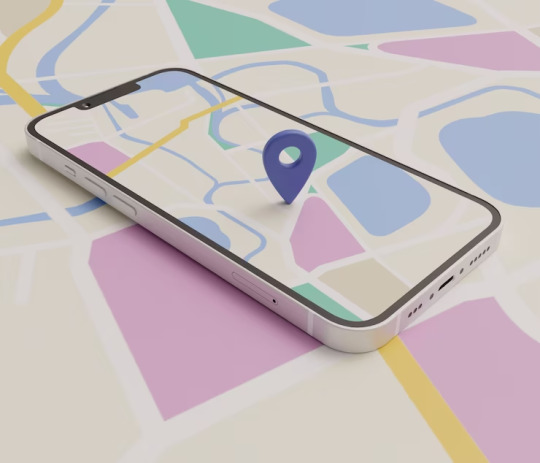
The world is witnessing advanced growth in technology and its application in the businesses across the industries.
One such industry that has undergone tremendous changes in the last two to three decades is the retail industry. Ecommerce was the drastic change brought in the retail industry due to the intense application of technology in the form of smartphones, high-speed internet connectivity and ecommerce software. Ecommerce is the buying and selling of goods through the online mode.
Thirty years have passed since the inception of ecommerce in the retail world and there's hardly any region in the world unaffected by it. According to Statista, the ecommerce market worldwide is projected to grow by 11.17% (2023-2027) resulting in a market volume of US$5.56tn in 2027.
Geofencing is one such feature provided in the ecommerce marketplace software that has transformed the entire delivery process. It lets the businesses carve out the areas where they want to deliver or where they can quickly deliver the items without any hassles.
Geofencing depends upon the delivery address. If the delivery address falls within the area carved out by the business on Google Maps, the ecommerce marketplace software lets you place the order or else it will restrict you from doing it.
Geofencing has turned out to be extremely helpful in the case of food delivery platforms where delivery timing and freshness of the cooked meal play an essential role. Any delayed delivery spoils the experience of the consumers forcing them to drift towards your rival’s platform.
Geofencing lets the ecommerce marketplace platforms achieve quick commerce which has become a trend nowadays. Failing to deliver the item in the shortest possible time shrinks your customer base. Through geo-fencing, the business can mark out the areas where timely delivery, due to rain or any other reason, is difficult to achieve. This helps the quick commerce software perform the timely delivery and achieve the much desired quick commerce.
Thus, we can see how a single feature of an ecommerce marketplace platform can be a game changer in the retail industry.
#quick commerce#ecommerce marketplace#food delivery software#hyperlocal delivery software#food delivery solution#q commerce#multi vendor ecommerce#hyperlocal ecommerce platform#geofencing#quick commerce software#quick commerce platform
1 note
·
View note
Text








#OTD in 2017:
Sharon: “Chief, I would prefer it if you called first before interrupting an active murder investigation.”
Chief Davis: “And I’d prefer if Major Crimes followed proper protocols.”
Sharon: “Oh Dr Morales is just helping…”
Chief Davis: “I’m not talking about him. Lieutenant Tao asked for immediate access to LAPD’s GEOFencing software & there are a lot of people in line ahead of you.”
Sharon: “Well, since this is a murder, why don’t we ask Chief Howard?”
Chief Davis: “You are gonna have to think up a new tactic pretty soon because any day now, that ‘let’s ask Chief Howard’ is just going to be a thing of the past.”
Sharon: “Well, while we are still in the present…”
Chief Davis: “If Major Crimes insists on special treatment, of course, you will get it. I’ll just tell everyone that they’re gonna have to wait until you’re done. Is that what you want me to do?”
Sharon: “Yes, if you could. Thank you.”
#MajorCrimes #DeadDrop
#major crimes#tv: major crimes#mary mcdonnell#captain sharon raydor#sharon raydor#darth raydor#Camryn Manheim#chief winnie davis#tv shows#tvedit#tv series
12 notes
·
View notes
Text
For over a decade, you couldn’t easily fly a DJI drone over restricted areas in the United States. DJI’s software would automatically stop you from flying over runways, power plants, public emergencies like wildfires, and the White House.
But confusingly, amidst the greatest US outpouring of drone distrust in years, and an incident of a DJI drone operator hindering LA wildfire fighting efforts, DJI is getting rid of its strong geofence. DJI will no longer enforce “No-Fly Zones,” instead only offering a dismissible warning — meaning only common sense, empathy, and the fear of getting caught by authorities will prevent people from flying where they shouldn’t.
6 notes
·
View notes
Text
What is the Objective of GPS Fleet Tracking Solutions?
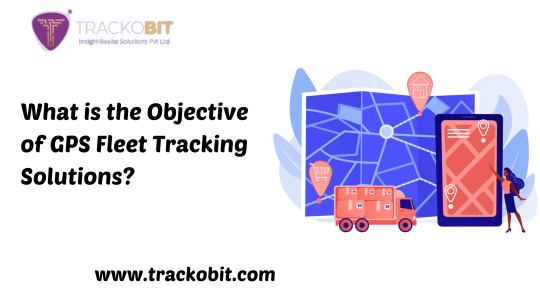
Owning a vehicle fleet that is constantly on the move, delivering goods, or providing services to customers. Managing all these vehicles can be a real headache, right? That's where GPS Fleet Tracking Solutions comes in to help. Since the main goal of GPS fleet tracking is to make vehicle operations more efficient, cost-effective, and customer-friendly by giving managers the data they need to manage their fleet effectively.
What is GPS Fleet Tracking Software?
GPS stands for Global Positioning System, and it's like having a super-accurate way of pinpointing the exact location of something, in this case, your vehicles. With GPS fleet tracking, you can see where each of your vehicles is at any given time, like having a live map showing you their locations.
How does GPS tracking work? It uses satellites to pinpoint the exact location of vehicles. This helps managers see where their vehicles are at all times, plan better routes, and avoid delays. GPS also monitors how drivers are driving, like speeding or harsh braking, so managers can coach them to drive safer.
Top 6 Objectives of GPS Fleet Management Solutions
GPS fleet tracking software has entirely sped up the way fleet operations are managed, significantly boosting safety on several fronts. In simple terms, it does so by offering real-time visibility into vehicle whereabouts, driver behaviors, and vehicle health status.
Monitoring and Improving Driver Behavior
Speed Monitoring: GPS fleet tracking software can alert fleet managers when a driver exceeds speed limits. A transportation company can easily reduce over-speeding incidents within a few months after implementing GPS tracking, leading to a safer driving environment and fewer speed-related accidents using video telematics solutions.
Harsh Braking and Acceleration Alerts: By identifying drivers who frequently engage in harsh braking or rapid acceleration, companies can provide targeted training to improve their driving habits. Real-world instance: A delivery service implemented harsh event alerts and saw a 20% decrease in such events, reducing the risk of rear-end collisions and rollovers.
Vehicle Health and Maintenance Alerts
Preventive Maintenance: Fleet tracking software proactively alerts managers about upcoming maintenance tasks based on mileage or engine hours, preventing breakdowns. A logistics company experienced a 30% decrease in vehicle downtime by adhering to preventive maintenance schedules recommended by their GPS fleet tracking system.
Real-time Alerts for Critical Issues: Instant notifications about engine trouble or tire pressure issues enable immediate action, preventing accidents. A construction firm avoided a potential accident when their GPS system flagged a critical tire pressure drop in one of their trucks, allowing them to address the issue before the vehicle hit the road.
3. Enhancing Route Safety
Safe and Efficient Routes: GPS tracking can identify the safest and most efficient routes, taking into account road conditions, traffic, and weather. During an unexpected heavy snowstorm, a fleet manager was able to reroute drivers in real-time, avoiding accident-prone areas and ensuring driver safety.
Geofencing: This allows companies to create virtual boundaries and receive alerts if a vehicle enters or exits certain areas, enhancing security and safety. A moving company set up geofences around high-risk areas (e.g., regions with high crime rates), ensuring drivers stayed in safer regions, which minimized risk and improved overall safety.
4. Cutting Down the Cost
Reduce costs: GPS tracking helps cut expenses in several ways. It minimizes unauthorized vehicle use, decreases fuel consumption through route optimization, and enables preventive maintenance scheduling based on actual vehicle usage, reducing costly breakdowns and downtime. So, why not buy GPS tracker for vehicles for the management.
5. Emergency Support and Response
In the event of an accident or emergency, GPS tracking can pinpoint the exact location of the vehicle, allowing for a faster response from emergency services. After a fleet vehicle was involved in a crash in a remote location, the GPS system immediately notified the fleet manager and provided the precise location, enabling quick dispatch of emergency services and potentially saving lives.
6. Ensuring Compliance With Safety Regulations
GPS tracking software helps companies ensure that drivers adhere to regulations such as hours of service, reducing fatigue-related accidents. A trucking company struggling with compliance fines implemented GPS tracking to monitor driver hours, significantly reducing violations and improving road safety.
Before You Go!
In conclusion, GPS fleet tracking software plays an important role in enhancing the safety of fleet operations. Through vehicle telematics solutions, it monitors driver behavior, ensuring vehicle health, providing emergency support, and enhancing route planning, it not only helps in preventing accidents but also promotes a culture of safety.
GPS fleeet tracking software by TrackoBit offers tangible benefits that can translate into cost savings, increased efficiency, better customer service, and enhanced security for small businesses. Its applications across various industries make it a versatile tool that can be tailored to meet diverse operational needs, ultimately giving small business owners a competitive edge and peace of mind.
Source : What is the Objective of GPS Fleet Tracking Solutions?
1 note
·
View note
Text
Boost Productivity with Workstatus's Geofencing Time Tracking Software
Boost productivity with Workstatus's Geofencing Time Tracking Software. Effortlessly monitor employee locations, ensure precise time tracking, and boost productivity using advanced geofencing technology. Perfect for remote teams and field workers, our software streamlines operations and reduces errors. Learn more at Workstatus.

1 note
·
View note
Text
Geofencing Software: Precision and Performance Redefine
Geofencing software has revolutionized location-based services by offering unparalleled precision and performance. This technology allows businesses to create virtual perimeters and trigger actions when devices enter or leave these defined zones. By leveraging advanced GPS, Wi-Fi, and cellular data, geofencing software ensures accurate and reliable location tracking. It enhances marketing strategies, improves security measures, and streamlines operations across various industries. With continuous advancements, geofencing software redefines how companies interact with their customers and manage their resources, providing a cutting-edge solution for modern business challenges. Discover how this innovative tool can elevate your operations and deliver exceptional results.Visit -https://www.workstatus.io/blog/workforce-management/what-is-geofencing/
1 note
·
View note
Text
The Best Guide to GPS Location Software Systems
Whether you're a logistics company tracking shipments, a parent keeping an eye on your child's whereabouts, or a traveler exploring new destinations, GPS location software can enhance your daily life. In this comprehensive guide, we will delve into the world of GPS location software systems, exploring their features, applications, and the top options available.
Understanding GPS Location Software Systems
GPS, which stands for Global Positioning System, is a network of satellites that orbit the Earth. These satellites transmit signals to GPS receivers, which then calculate their precise geographic location. GPS location software systems harness this technology to provide real-time tracking, mapping, and navigation services.
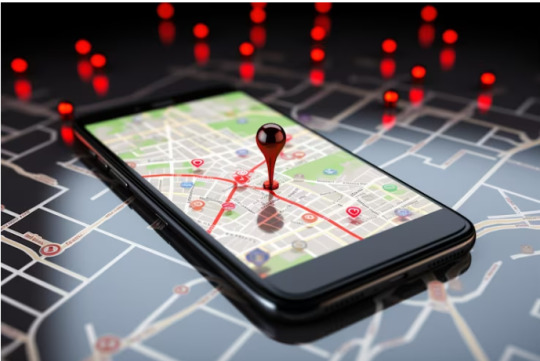
Key Features of GPS Location Software Systems
Real-Time Tracking: GPS location software can track the movement of people, vehicles, or assets in real time, providing up-to-the-minute location data.
Mapping and Navigation: These systems offer detailed maps and turn-by-turn navigation instructions, making it easier to reach your destination.
Geofencing: Geofencing allows users to define virtual boundaries on a map. When a tracked object enters or exits these boundaries, the software sends alerts or triggers specific actions.
History and Reporting: Users can access historical location data and generate reports to analyze past movements and trends.
Customization: Many GPS location software systems allow users to customize their tracking experience, including map views, alert settings, and reporting parameters.
Applications of GPS Location Software
1. Fleet Management:
GPS location software is a vital tool for businesses with vehicle fleets. It helps optimize routes, monitor driver behavior, and enhance overall operational efficiency.
2. Personal Safety:
Parents use GPS location software to keep tabs on their children's whereabouts, ensuring their safety. It's also beneficial for elderly family members or individuals with cognitive impairments.
3. Outdoor Activities:
GPS software aids hikers, campers, and outdoor enthusiasts in navigating unfamiliar terrain, preventing them from getting lost.
4. Asset Tracking:
Businesses can use GPS location software to track valuable assets, such as construction equipment, containers, and high-value shipments.
5. Emergency Services:
GPS location is crucial for first responders, as it helps them locate accident scenes and people in need of assistance more quickly.
Top GPS Location Software Systems
Google Maps: Widely used for navigation and location sharing, Google Maps offers a user-friendly interface and real-time traffic data.
Waze: Known for its community-driven features, Waze provides real-time traffic and road information based on user contributions.
GPSWOX: A versatile GPS tracking platform suitable for both personal and business use, offering customizable maps and geofencing features.
Geotab: Ideal for fleet management, Geotab provides comprehensive insights into vehicle performance and driver behavior.
Life360: A popular choice for family tracking, Life360 offers location sharing, safety features, and driving reports.
Garmin: Known for its GPS navigation devices, Garmin also offers a range of software solutions for various applications.
Traccar: An open-source GPS tracking platform, Traccar is highly customizable and suitable for businesses looking to build their tracking solutions.
Conclusion
GPS location software systems have transformed the way we navigate the world and manage our assets. Whether you're a business owner looking to streamline operations or a parent concerned about your child's safety, the right GPS location software can make a significant difference in your daily life. By understanding the features and applications of these systems, you can choose the best option to meet your needs and make the most of this powerful technology.
4 notes
·
View notes
Text
Tired of Manual Timesheets? Discover How Attendance Tracking Software Saves You Hours
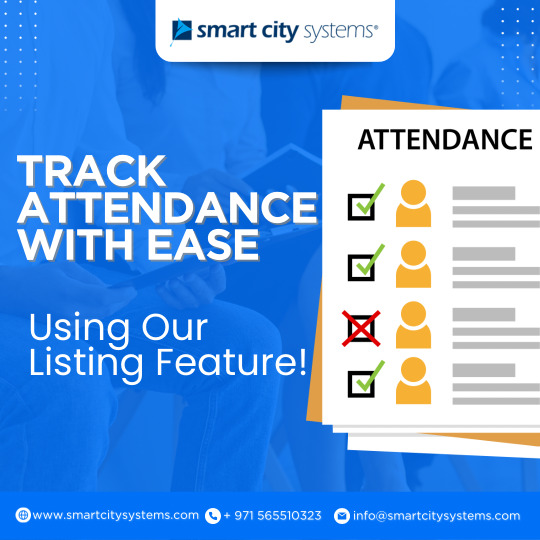
Manual timesheets have long been a part of workforce management, but for most businesses, they’re now a burden. From lost hours to payroll inaccuracies, traditional methods of tracking attendance come with hidden costs. In today’s fast-paced, tech-driven world, there’s a smarter way to handle it all: attendance tracking software.
Whether you run a small business or manage a large remote team, automating attendance tracking can drastically improve efficiency, accuracy, and employee satisfaction. In this article, we’ll explore why manual timesheets are outdated, what modern attendance tracking software offers, and how it can save your business hours every week.
The Problem with Manual Timesheets
Before diving into the solution, let’s understand the problems caused by old-school attendance tracking:
1. Time-Consuming Process
Employees fill out timesheets manually, either on paper or in spreadsheets. After that, supervisors put in hours checking schedules, confirming accuracy, and entering information into payroll systems. It’s not just tedious—it’s costly.
2. Human Error
Mistakes are inevitable. Workers could misplace their timesheets, round their hours incorrectly, or fail to log in or out. This leads to either overpayment or underpayment and opens the door to compliance issues.
3. Lack of Real-Time Insights
Manual timesheets provide you with a snapshot of the past, not the present. Managers can’t see who’s on-site, who’s running late, or who’s absent without making phone calls or checking manually.
4. Time Theft
Companies that use manual records frequently have "buddy punching" (one person checking in for another) and false hours. These fraudulent practices can cost companies thousands every year.
What Is Attendance Tracking Software?
Attendance monitoring software is a digital system that automates employee time and attendance records. It allows team members to clock in/out using mobile apps, biometric devices, web portals, or geofencing, and syncs all data to a centralized system.
Some key features include:
Real-time dashboards
Mobile punch-ins with GPS
Overtime and break tracking
Integration with payroll systems
Customizable shift schedules
Absence and leave management
How Attendance Tracking Software Saves You Hours
Let’s break down the specific ways smart attendance systems can save your team—and your business—valuable hours each week.
1. Automated Time Logging
Instead of filling out sheets manually, employees can clock in and out with one tap via smartphone or biometric scanner. No need to write down hours, log spreadsheets, or remember to submit reports. This automation can save 15–20 minutes per employee per day.
For a company with 50 employees, that’s over 80 hours saved per week—just in time entry.
2. Instant Access for Managers
Supervisors can view live attendance data, see who’s clocked in, and monitor overtime in real-time. No more chasing down records or making calls. A web dashboard displays all the data you need in a clean, sortable format.
3. Streamlined Payroll
Because clock-ins are accurate and synced to hours worked, payroll processing becomes much easier. Many attendance tools directly integrate with your payroll software, reducing the need for double entry. This cuts down payroll processing time by 50% or more.
4. Built-In Compliance
Labour laws require businesses to track employee work hours accurately. Automated software ensures compliance by maintaining error-free, timestamped records, helping you avoid penalties or legal trouble during audits.
5. Custom Scheduling & Leave Management
You can assign shifts, approve leave, and handle sick days directly through the software. This saves time otherwise spent on phone calls, emails, or back-and-forth communication.
Important Qualities to Consider in Attendance Monitoring Software
Not all attendance solutions are created equal. If you’re considering a switch, look for these time-saving features:
✅ Mobile App Access
Allows employees to clock in/out on their phones—perfect for remote or field workers.
✅ GPS & Geofencing
Ensure that employees clock in only when they are within the job site area.
✅ Biometric Integration
Eliminates buddy punching with fingerprint or facial recognition technology.
✅ Timesheet Automation
Automatically calculates total hours, breaks, and overtime—ready for payroll export.
✅ Leave & Absence Management
Workers can submit leave requests, and supervisors can click to accept or deny them.
✅ Notifications & Alerts
Eliminate manual tracking by receiving warnings for missed punches, overtime, or late logins.
✅ Integration with Payroll & HRMS
Save even more time by syncing with your existing payroll or HR software.
Benefits Beyond Time Savings
The time-saving benefits of attendance tracking software are just the beginning. You also gain:
📈 Better Data for Decision-Making
Use analytics to spot attendance trends, absenteeism, or overtime patterns.
💰 Cost Control
Track labor costs in real-time and optimize staffing based on actual data.
🙌 Improved Employee Trust
Automated systems reduce disputes and errors in working hours and salary.
🛡️ Enhanced Security
With biometric systems or geofencing, you eliminate time theft and false entries.
Is It Time to Make the Switch?
If your business still relies on paper-based logs, Excel sheets, or verbal confirmations, you’re likely wasting dozens of hours each month. With cloud-based attendance software, you can eliminate these inefficiencies and boost productivity across the board.
Think about what you could do with those saved hours:
Focus on strategic HR planning
Improve employee training
Enhance customer service
Scale your operations with confidence
Final Thoughts
Manual timesheets are holding your business back. In today’s world, where time is money, automating attendance is not a luxury—it’s a necessity.
From saving hours each week to improving payroll accuracy and compliance, attendance tracking software is a smart investment that pays off almost immediately. Whether you manage a deskless workforce or a hybrid team, there’s a solution that fits your needs.
So ask yourself:
Are you ready to stop wasting time and start tracking it smarter?
#time & attendance management software#best attendance tracking software#time attendance software#attendance tracking software#employee attendance software
0 notes
Text
The Advantages of Smart Attendance Management Software for Workplace Productivity.

Away from Punchcards and Spreadsheets
Today's hybrid workplace means you spend far too much time dealing with traditional methods; manual attendance must be eliminated. You might still be using methods like Manual punches or systems that are subject to errors, buddy-punching, misreporting, and time theft, all draining productivity and creating HR headaches. Smart attendance management software is here to help, not just manage time but reshape the way businesses manage their workforce.
Turn Attendance into Results - Not Just Time
Smart attendance systems allow managers to have direct line-of-sight into their employee’s attendance. Attendance is real-time, so whether or not teams are in-office, at home, or on the field, the manager has access to seeing where attendance is taking place and when it can be disrupted. This makes decision-making quicker, helps them better plan their shifts, and solves issues surrounding absenteeism or overtime bottlenecks more effectively.
Remove manual time-related mistakes
When using smart attendance systems, attendance is now factual because biometric integration, facial recognition, or other geofencing certainly are tough to bypass. The system ensures that you and your teams have basically tamper-proof attendance! The other advantages are trusting their attendance will provide the right payroll outcomes and teams should be happy, because you going to reduce the time it takes reviewing and making manual corrections related to attendance; if smart systems are taking attendance, virtually errorproof attendance will result in dispositioning entire payroll systems.
Increase Accountability without Micromanaging
Code compliance in every workday is a major challenge. Delegating accountability requires transparency and trust. Smart attendance software delivers transparency without micromanagement. Not only does the employee know the time worked has been accurately and fairly logged, but the manager can also access their attendance information without any management "check-ins".
Working Seamlessly with Payroll and HR systems
Modern smart attendance solutions don't work in a vacuum. Smart attendance and time-tracking systems work seamlessly with payroll and HR systems. Attendance data automatically syncs without delays to instantly calculate pay, used for working shifts, overtime, and even entry leave days. This reduces delays, improves the accuracy of payroll, and everyone's happy (except maybe finance or HR depending on their company's ledger).
Supporting Flex and Remote Workforce
In 2025, flexibility is no longer a perk or benefit—it is how we work now. Smart attendance software offers a competitive advantage for organizations supporting hybrid workforces and remote workers to clock into their work from "approved" locations, work hours can be logged through mobile applications, and can even allow task-specific time logs. While time won't always reflect work output, it does lend itself to a fairer measure of work output when an employee's location of work is in question.
Conclusion: A Smarter Way to Work
Smart attendance management software goes beyond time management. Work process transparency plays an important role in recognizing the power of teams to achieve accuracy and effective workforce planning. In an era of work optimization, it's time to take your attendance practices from optional to strategic and take the first step toward a more productive and engaged workforce!
0 notes
Text
How Long a Mobile App Development Company in Bangalore Can Accelerate Your Digital Transformation Strategy
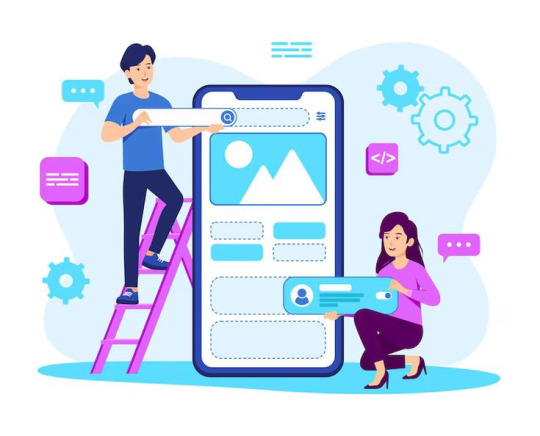
In today’s digital economy, transformation is not optional—it’s essential. Businesses across industries are rapidly adopting new technologies to remain competitive, efficient, and customer-focused. At the heart of this transformation lies mobile technology. Mobile apps have become a primary interface between businesses and consumers, enabling seamless interactions, personalized services, and real-time engagement. Bangalore, often referred to as the "Silicon Valley of India," is home to a thriving ecosystem of mobile app development companies. These firms play a pivotal role in helping businesses accelerate their digital transformation strategy. Among them, WebSenor stands out as a reliable and forward-thinking mobile app development company in Bangalore, delivering customized solutions that meet the evolving needs of modern enterprises.
The Role of Mobile Apps in Digital Transformation
Mobile as the First Touchpoint
In today’s hyper-connected world, mobile apps serve as the first and often most frequent point of contact between businesses and their customers. A well-designed app can enhance user engagement, improve accessibility, and build brand loyalty. This is why many companies prioritize a mobile-first strategy as a key component of digital transformation.
Empowering Internal Teams and Operations
Mobile apps aren’t just for customers. They streamline internal operations through process automation, remote access to data, and real-time communication tools. From HR to logistics, enterprise mobile apps improve productivity and decision-making across departments.
Why Choose a Mobile App Development Company in Bangalore
Bangalore as a Global IT Hub
Bangalore hosts some of the world’s best tech talent and infrastructure. With access to top-tier mobile app developers in Bangalore, companies benefit from cutting-edge development practices, innovation, and scalability. Outsourcing app development here ensures cost-effectiveness without compromising quality.
WebSenor’s Position as a Trusted Partner
WebSenor is a prominent Android and iOS app development company in Bangalore, offering robust and scalable solutions for businesses of all sizes. With a team of experienced professionals, they specialize in custom mobile app development in Bangalore, focusing on long-term client success through strategic consultation and reliable delivery.
From retail and healthcare to education and logistics, WebSenor has delivered transformative app solutions across multiple sectors.
How a Mobile App Accelerates Digital Transformation
Speed to Market
One of the biggest advantages of working with a skilled app development team is rapid time-to-market. WebSenor uses agile mobile development methods to create Minimum Viable Products (MVPs) quickly, enabling businesses to test, refine, and scale efficiently.
Integration with Existing Systems
WebSenor ensures that your mobile app integrates seamlessly with existing ERP, CRM, and other business systems. This transition from legacy software to modern platforms is crucial for successful digital transformation.
Data-Driven Decision Making
Modern apps are equipped with analytics tools that provide real-time data on user behavior, preferences, and performance. These insights allow businesses to make informed decisions, personalize user experiences, and optimize app performance.
Omnichannel User Engagement
Mobile apps are central to omnichannel strategies. They connect with websites, social platforms, and even in-store systems, offering a unified and personalized experience through features like push notifications, geofencing, and chatbots.
WebSenor’s Expertise in Custom Mobile App Development
Native, Cross-Platform & Hybrid Development
WebSenor builds high-performance apps using the latest technologies including Flutter, React Native, Swift, and Kotlin. Whether you need a native iOS or Android app or a hybrid solution, the tech stack is carefully chosen to align with your business goals.
Industry-Focused Solutions
From startup mobile app partners to large enterprises, WebSenor has developed solutions for:
E-commerce: inventory management, payment integration
Healthcare: telemedicine, health tracking
Education: e-learning platforms
Logistics: real-time tracking, fleet management
Each project is measured through KPIs such as app downloads, user retention, task automation, and cost savings.
Secure and Scalable Architecture
Security and scalability are built into every app WebSenor develops. Adherence to data protection regulations, secure APIs, and frequent updates ensure that your app evolves safely with your business.
Measuring the Business Impact of Mobile Transformation
ROI from App Development
Key performance indicators include:
Increased customer acquisition and engagement
Reduced manual processes and human error
Enhanced employee productivity
Apps enable businesses to operate more efficiently and engage more meaningfully with their users.
Enhancing Customer Loyalty and Brand Trust
Mobile apps with intuitive UI/UX design create positive user experiences, boosting Net Promoter Scores (NPS) and customer satisfaction. Real-world success stories from WebSenor’s clients demonstrate how thoughtful design and performance translate into stronger customer relationships.
How Long Does It Take to See Results?
Typical Mobile App Development Timelines
MVPs: 4 to 6 weeks
Mid-level apps: 3 to 6 months
Enterprise apps: 6 to 12+ months
Results begin to surface as soon as the MVP is launched and tested in real-world conditions. Key factors include the project’s scope, target users, and feedback cycles.
Factors That Influence Speed
Business readiness and clear objectives
API and third-party service availability
Compliance and regulatory requirements
Stakeholder involvement and user feedback
WebSenor’s Process for Speed and Quality
WebSenor uses agile sprints to break the development process into manageable chunks. Regular feedback loops with clients ensure quick adjustments and smooth delivery. Dedicated project managers maintain accountability and streamline communication.
Partnering with WebSenor: Your Next Steps
WebSenor is more than a vendor—it’s a strategic partner committed to your digital transformation journey.
Engagement Process
Discovery Phase: Understand business goals and user needs
Proposal & Planning: Define scope, timeline, and tech stack
Development: Agile execution with regular check-ins
Launch & Support: Deployment, user training, and continuous updates
Ready to begin? WebSenor offers consultations to explore your project and propose tailored mobile app strategies.
Conclusion
A trusted mobile app development company in Bangalore like WebSenor can significantly accelerate your digital transformation. From enhancing customer experience to streamlining internal operations, mobile apps play a vital role in modern business success.
WebSenor’s experience, technical depth, and client-centric approach make it an ideal partner for companies aiming to build impactful mobile solutions. As the digital landscape continues to evolve, partnering with experts who understand both technology and business is essential.
Ready to transform your business with a mobile-first strategy? Contact WebSenor today and take the first step toward smarter, faster digital innovation. https://websenor.com/mobile-app-development-companies-in-bangalore/
#MobileAppDevelopment#MobileAppDevelopmentCompany#MobileAppDevelopmentCompanyInBangalore#TopMobileAppDevelopmentCompanies#BestAppDevelopersInBangalore#CustomMobileAppDevelopment#AndroidAppDevelopmentCompany#iOSAppDevelopmentCompany#AppDevelopmentServices#AppDevelopmentBangalore#AppDevelopersInBangalore#StartupAppPartner#MobileApplicationSolutions#OutsourcingAppDevelopment#UIUXDesignForMobileApps#AppDevelopmentCostBangalore#SoftwareDevelopmentBangalore#EnterpriseAppDevelopment#CrossPlatformApps#MobileFirstDesign#DigitalInnovation#TechCompanyBangalore
0 notes